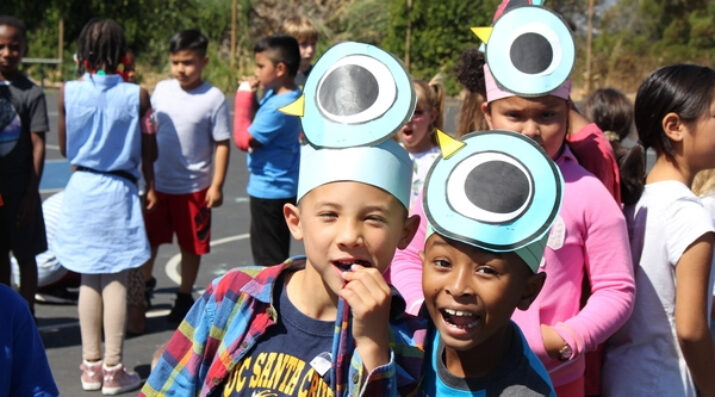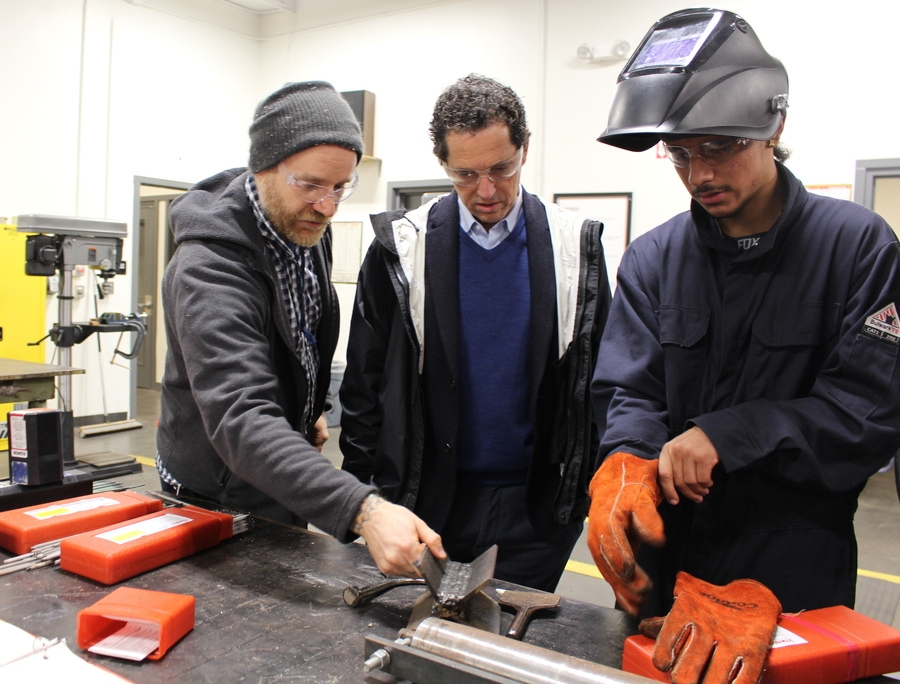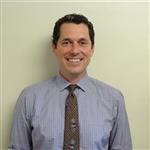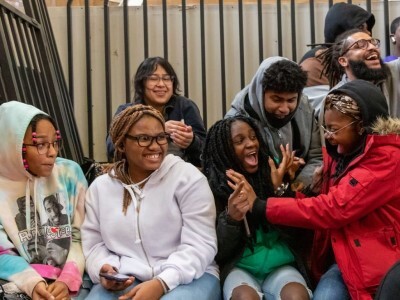Enabling Change
Leveraging the Lessons Learned from School during the Pandemic
Topics

Next generation learning is all about everyone in the system—from students through teachers to policymakers—taking charge of their own learning, development, and work. That doesn’t happen by forcing change through mandates and compliance. It happens by creating the environment and the equity of opportunity for everyone in the system to do their best possible work.
With traditional requirements made more flexible this year, schools and districts have innovated like never before. Will we learn from these adaptations and continue emerging practices?
While current energy is being put into how and when all of our students and staff can get back into our school buildings, an even more important question about schools is lingering: How can we successfully maintain, expand, and scale the many innovative, creative, and educationally powerful adaptations that occurred during the pandemic when we return to school and the pandemic subsides?
During the 2020-2021 current school year, states and districts made flexible the usually rigid parameters of school. Knowing that local schools and districts could not successfully meet the myriad of annual mandates with any type of authenticity, many of the traditional school rules were relaxed or waived. Some of these usually very rigid parameters include state testing, required assessments, number of total classes, grades and grading, total instructional minutes, and more.
With these traditional requirements made more flexible, schools and districts have innovated like never before.
The Unprecedented Creativity in Supporting Students This Year
Changing the big rules and then letting local schools, districts, and communities determine how to best support their students has been transformative. I would argue we have seen more creativity and self-driven change in education this year than in the many years of heavy accountability and outside mandated changes. As the renowned organizational theorist Margaret Wheatley reminds us, “to create better health in a living system, connect it to more of itself. When a system is failing, or performing poorly, the solution will be discovered within the system if more and better connections are created. A failing system needs to start talking to itself, especially to those it didn't know were even part of itself.”
In West Contra Costa Unified School District, the K-12 school district of about 30,000 students where I am superintendent, this flexibility afforded us the opportunity to try on a number of new structures in service of our students. This year every student has an advisory period to maintain a stronger social connection. Every teacher offers personalized office hours to support students individually and all teachers hold a weekly family hour to allow time and space for family connection.
High school senior Destiny shared, “Our senior projects were put on hold because of what is happening, so he [Mr. Grover, Destiny’s yearbook and media academy teacher] redirected us to what we should be doing. We are doing more collaborative work, and he is making sure we don’t feel isolated while being in self-isolation.”
Another senior, Javier, described the support he receives from his elective teacher. “By recording her lectures, it allows us to pause and unpause the lessons,” Javier explained. “She records the lessons so that we can go back later. It is good to rewind and go back.” Javier goes on to share, “She also has specific hours, and we can come in and get specific help on whatever the material may be.”
Additionally, we augmented our professional learning for all staff with a focus on both teaching in the digital world as well as system wide work on how to become a more equitable and anti-racist educational organization.
We organized time every week for student wellness with a focus on supporting student voice and social-emotional health.
Through intense trial and error, we partnered with local farmers to ensure all the food we distribute to our community (now over 15 million meals) is local, seasonal and organic. Not only is this good for both our students and families, it is also highly supportive of the local economy and the environment.
For next year, we are currently exploring how secondary courses in one high school could be offered virtually across all of our schools to further invite students into classes that actively interest them.
Our implementation is far from perfect with many stumbles along the way. We are just one district and there are countless examples across the country. Schools and school districts have tried new models of grading students to further support and empower their students. For example, our neighboring district, Monterey Peninsula Unified, created a more flexible grading system, allowing for more “Incompletes” in order that students have multiple opportunities to show mastery of standards. This work included making changes to Board grading policy and individualized implementation steps including direct student support through office hours. Early reports from district leadership share that mindsets are beginning to shift about how we can support our students differently over time. This shift in grading policy reflects their understanding that students will master standards at different paces with differing levels of personalized support.
Schools and districts have changed class offerings to ask students to cover less material but go deeper and analyze more. Schools have leveraged the outside world and the health and beauty of open spaces to offer more to their students. These emerging practices are happening all across the country and many we do not even know about. We must name them, nurture them, and nourish them. What a shame it would be a year from now to think back fondly on when we were able to do so much more and different for our students.

Courtesy of West Contra Costa Unified School District
Breaking Free from the Outdated Rules of School Forever
For decades, many educators have desperately tried to move our systems away from the rigid factory model of education. Educators have worked tirelessly to find ways to depart from the routinized bell schedules, fixed times and days of the year, ability tracking for students, subjective grading, and more. The current model arose from its industrial (and often racist) origins and over time has now calcified into a set of archaic rules and regulations that govern schools and districts.
We have banged our heads against the batch processing and accountability-driven model that has had little benefit for those students farthest from opportunity. The current model has left so many behind and generally benefited only those with existing cultural and economic capital. The rules of school are primarily written in state policy but they are also defined by district policy and collectively bargained agreements. The federal government also plays a key role as the majority of students in U.S. schools today qualify for the federal Free and Reduced Lunch Program whose funding is also governed by similarly rigid rules. Schools and districts spend a great majority of their time figuring out how to comply with these rules and report on these mandates with little space or time to think differently. In the end, our public educational model leaves little room for authentic change. Even the charter movement aimed at originally learning how we could do school differently did not result in major changes to traditional rules and regulations governing schools and school districts.
As we head back to school in the fall, states and districts must quickly gather what we learned from all of these adaptations. As we close an enormously challenging school year and in some ways appreciate just mere survival, we must also ask, “What have we learned? Where are the emerging practices?”
At the end of the day, the key to maintaining these important innovations and adaptations are the students. Students need to be front and center in the discussion about what works and what does not work for them. While the adults squabble about how and when to best return to school, the students can clearly tell us what they need inside their educational experience. Amid the often divisive adult anger between parents, teachers, unions, elected officials, and district leaders are the students, waiting to be asked what works and what does not. Are we willing to listen to them? Will we have to tell them that we are sorry and we are just not able to do that next year?
And let’s not forget about the education profession where fewer and fewer young people are entering the education ranks. While school funding and pay remains a key issue so does the fact that our industry is not seen as a place for creative and innovative thought. Now is the time to take down some of the historical walls and let those in schools and districts work with their students to design new and different educational experiences that will motivate them, keep them mentally healthy and sharp, and embed a love of learning for years to come. This type of work is fulfilling for the adults as it allows for their agency and creativity to flow.
Let’s not return to the rigidity of the past. Let’s use everything we debuted this year to find the right federal, state, and local structures that need to be made more flexible or eliminated. Let’s reimagine what our schools can look like. Let’s avoid the current and oversimplified technology-based binary argument between the future of virtual school and brick and mortar school. Instead, let’s invest in a real reflection about how to give students authentic and supportive deeper learning experiences that help them love school and emerge as healthy young people in our world.
Photos courtesy of West Contra Costa Unified School District.




